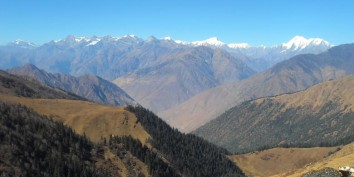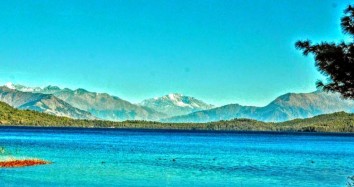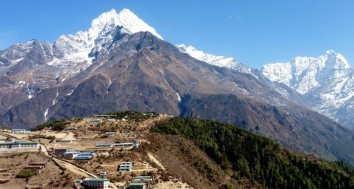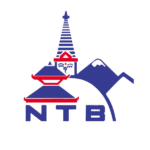-
A thrilling, adventurous, and exciting trek to the Dhaulagiri Base Camp, which takes 18 days.
-
This trek offers a journey into the remote and wild Himalayan terrain, where you can traverse deep valleys, alpine glaciers, and steep ridgelines.
-
Reach the base camp of Dhaulagiri and witness a close and extravagant view of Dhaulagiri peak (8,167m) from its base camp at 4,740 metres.
-
Also, chances to ascend through some other base camps, including the Italian base camp, Glacier camp, before reaching Dhaulagiri Base Camp.
-
A beautiful opportunity to delve deep into the culture, tradition, and religion of this trekking region while interacting with the locals.
-
Trekkers can visit the World's deepest Gorge, the Kali Gandaki Gorge, framed by the Dhaulagiri and Annapurna massifs on either side.
-
Begin the package with a scenic drive from Kathmandu to Beni, followed by a return drive from Pokhara to Kathmandu.
-
Lay your eyes on some of the most exciting Himalayan peaks, including Dhaulagiri I, Dhaulagiri II, Dhaulagiri III, Dhaulagiri V, and potentially Annapurna I.
Dhaulagiri Base Camp Trek Overview
The Dhaulagiri Base Camp Trek, organized by Nepal Unique Treks & Expeditions, is an 18-day trek that takes us to the base camp of the 8167-meter-tall Dhaulagiri Peak. Well, it's not just another Trek in Nepal; it’s a full-blown expedition into one of Nepal’s boldest, most remote, and adrenaline-charged landscapes. Moreover, Dhaulagiri also sits as the seventh-highest peak in the world, with an altitude of 8,167 meters above sea level. Well, if you want some crave-worthy challenges, solitude, and jaw-dropping mountain vistas, this off-the-map adventure is your ultimate playground.
Nicknamed the gateway to the Hidden Valley, Dhaulagiri sits still, refreshingly untouched by the buzz of mainstream trekking. From lush jungle trails and cascading rivers to steep moraines and frozen passes, this trek throws a little bit of everything your way. Besides, this trekking route also takes us to hike through enchanted rhododendron forests, camp beneath starlit glaciers, and conquer French Pass (5,360m) and Dhampus Pass (5,240m). Furthermore, every step in the trek to Dhaulagiri Base Camp rewards you with epic views of Dhaulagiri I, Tukuche Peak, and the glorious Annapurna range.
The adventure pauses for a breather (and some serious eye candy) at the serene Italian Base Camp, where acclimatisation meets alpine magic. After that, we walk further to the world’s deepest gorge, the Kali Gandaki gorge. However, let us remind you that the Dhaulagiri Base Camp Trek is not just a trek through rock and ice; it’s also a voyage into Himalayan culture. During the trek, we come across several Thakali and Tibetan-influenced communities, explore ancient monasteries, and walk through villages where time stands still.
Permits for the Dhaulagiri Base Camp Trek
Just like any other trekking route in Nepal, the Dhaulagiri Base Camp Trekking package also requires trekkers to obtain some important permits. Here are the permits that you need to obtain for the trek to Dhaulagiri Base Camp:
-
Trekkers Information Management System (TIMS)
-
Restricted Area Permit (RAP)
-
Annaurna Conservation Area Permit (ACAP)
Booking the package with Nepal Unique Treks & Expeditions means that our local representatives assist you throughout the permit-obtaining process. Therefore, the trekkers do not have to worry much about the hassle that comes with the formalities.
Best Season for the Dhaulagiri Base Camp Trek
Trekking to Dhaulagiri Base Camp is an intense, high-altitude journey that demands favourable weather for both safety and enjoyment. Choosing the right season significantly improves your experience, offering clearer skies, better trail conditions, and more comfortable temperatures. Since this route includes crossing glacier fields and remote mountain passes like French Pass (5,360m) and Dhampus Pass (5,240m), timing your trek well is essential for a successful adventure. Therefore, we recommend the trekkers to choose the Spring season (March to May) and the Autumn Season (September to November) as the most ideal seasons.
Here’s a breakdown of what to expect in each season:
Spring (March to May)
Ideal for trekking, with stable weather, moderate temperatures, and blooming rhododendron forests adding colour to the lower trails.
Autumn (September to November)
The most popular season due to crisp skies, excellent visibility, and cool, dry days. Trails are in their best condition.
Winter (December to February)
Suitable only for highly experienced trekkers. Heavy snow and extreme cold often block passes and make camping conditions very tough.
Monsoon/Summer (June to August)
Not recommended. Rain causes slippery trails, landslides, leeches, and limited visibility, making the trek risky and less enjoyable.
Late October to early November & late March to mid-April
These short windows within the best seasons offer the perfect mix of clear weather, thinner crowds, and dramatic mountain views.
Dhaulagiri Base Camp Trek Difficulty Level
Dhaulagiri Base Camp Trekking journey is considered to be a strenuous trekking package in Nepal. For that reason, we recommend only experienced trekkers to go on this trek. Let us tell you that the trek includes crossing two major high passes: French Pass (5,360m) and Dhampus Pass (5,240m), as well as navigating through glaciers, crevasses, and isolated alpine terrain. Due to steep ascents through some challenging trails, the Dhaulagiri Base Camp Trek demands excellent physical condition, strong mental resilience, and prior experience with high-altitude trekking or mountaineering.
Besides, here are a few more factors that make this a difficult and strenuous trek in Nepal:
-
The trail requires the trekkers to walk for about 5-8 hours a day over rough terrain, including moraines, scree slopes, icy sections, and unmarked alpine trails.
-
Much of the trek remains above 3,500m, with extended time at high elevations. This means that there are higher risks of altitude sickness and fatigue.
-
This trek also takes us past some remote parts of the region with fewer to no villages or rescue facilities. Due to that, the trekkers must fully rely on their guides and support team.
-
Unlike teahouse treks, this route involves multi-day tented camping with no access to basic amenities, adding to the physical and logistical challenge.
-
We also need to trek over snowfields, glaciers, and crevassed zones, requiring balance, caution, and sometimes technical gear.
-
Furthermore, the journey also includes weather shifts, altitude strain, and the raw wilderness, requiring mental toughness and physical stamina throughout the journey.
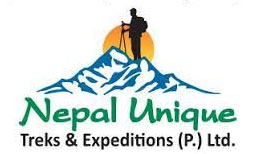
 WhatsApp
WhatsApp  Plan Your Trip
Plan Your Trip



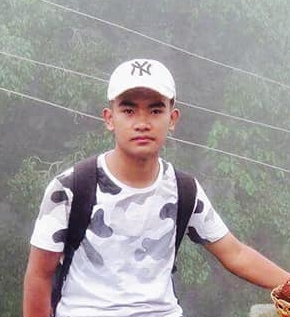



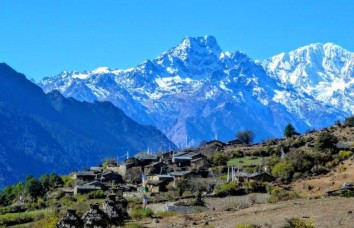


 US$1195
US$1195 